Easy Mango Salad Dressing Kids Will Love in Bali, Indonesia
Discover the perfect balance of sweet and tangy with this Bali-inspired mango salad dressing.
Designed with kids in mind, this recipe combines local flavors with a tropical twist, making it an instant family favorite.
Let’s dive into this easy recipe that’s sure to add a splash of sunshine to your meals in Bali, Indonesia.
Table of Contents
What is Mango Salad Dressing?
Mango salad dressing is a vibrant, tropical condiment that blends ripe mangoes with tangy and savory ingredients to create a smooth, versatile dressing.
This kid-friendly version adds a Balinese touch with local ingredients for a unique flavor profile.
Balinese Inspiration for Mango Dressing
Drawing from Bali’s rich culinary traditions, this recipe incorporates local ingredients like kaffir lime leaves, palm sugar, and coconut milk.
These elements enhance the tropical flavor while ensuring the dressing remains light and appealing for kids.
Ingredients for Bali-Inspired Mango Dressing (Serves 4 Kids)

1 ripe mango (peeled and diced)
2 tablespoons coconut milk
1 tablespoon fresh lime juice
1 teaspoon grated ginger
1 teaspoon palm sugar (or brown sugar)
2 tablespoons extra virgin olive oil
1 small garlic clove (minced)
Pinch of salt
Optional: A few fresh kaffir lime leaves (finely chopped) for extra zest
Step-by-Step Guide to Making Mango Dressing
Step 1: Prepare the Mango Base
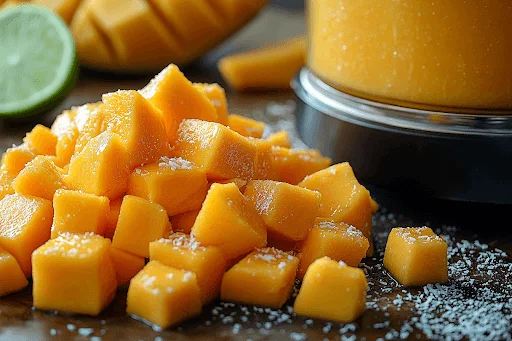
Blend on high speed until the texture is smooth and creamy, free from lumps.
Step 2: Add Balinese Flavors
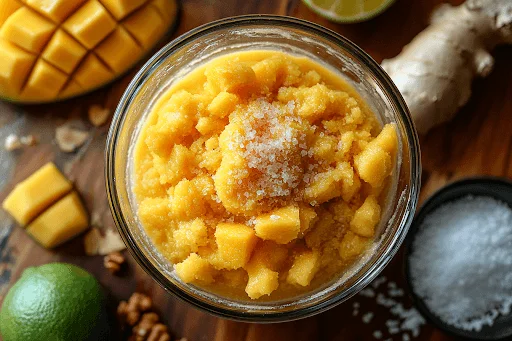
If available, include finely chopped kaffir lime leaves for an extra burst of fragrance. Blend again on medium speed until the mixture is well emulsified.
Step 3: Adjust Seasoning
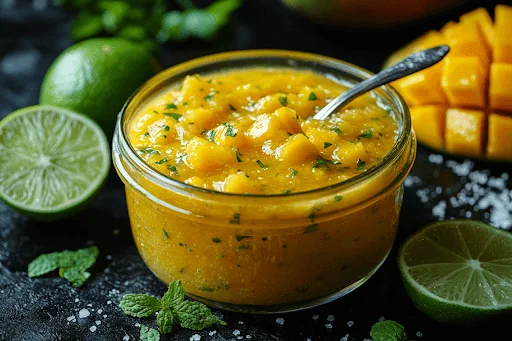
Blend for a few seconds to incorporate any adjustments.
Step 4: Chill Before Serving
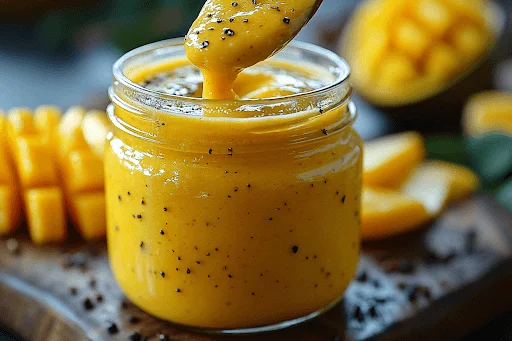
This chilling process enhances the melding of flavors and ensures a refreshing taste.
Step 5: Serve and Enjoy
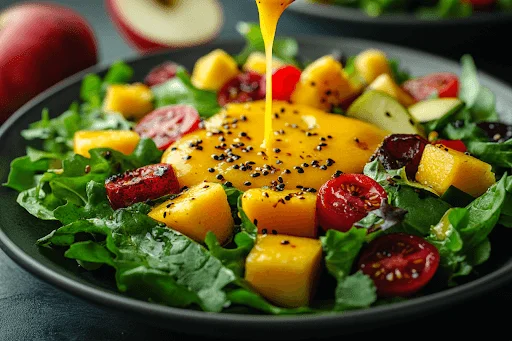
For a fun twist, let kids dip fruit slices like apple or pear into the dressing and enjoy a tropical snack.
Tips for Perfect Bali-Style Presentation
Serve in Coconut Shells: For an authentic Balinese feel, pour the dressing into hollowed coconut shells. Line the shell with a banana leaf for added aesthetic appeal.
Garnish with Tropical Elements: Decorate the serving plate with freshly cut slices of mango, lime wedges, or tropical leaves. Sprinkle shredded coconut on top of the dressing for extra texture.
Use Balinese Tableware: Present the salad dressing alongside local dishes in woven bamboo trays or traditional clay bowls to immerse your family in the Balinese dining experience.
Add Edible Flowers: Garnish with edible flowers like frangipani or marigolds to bring a pop of color and fragrance to the table. These are commonly used in Bali for culinary decoration.
Layer Ingredients Creatively: Arrange salads in colorful layers and drizzle the dressing lightly on top. Add toasted sesame seeds or crushed peanuts for added crunch and flavor.
Detailed Recipe Overview and Cost for Bali Families
Preparation Time: 10 minutes
Servings: 4 kid-sized portions
Estimated Cost in Bali: IDR 20,000-30,000 (Approx. $1.50-$2 USD)
Nutrition Facts (Per Serving):
Calories: 120 kcal
Fat: 7g
Cholesterol: 0mg
Sodium: 40mg
Carbohydrates: 15g
Protein: 1g
Calories
120 kcal
Fat
7g
Cholestrol
0mg
Sodium
40mg
Carbohydrates
15g
Protein
1g
FAQs about Mango Salad Dressing in Bali
Q1: Are there any traditional Balinese substitutes for olive oil?
A: Yes, you can use coconut oil as a substitute. It adds a rich tropical flavor that aligns with Balinese cuisine.
Q2: Can I incorporate sambal into this recipe?
A: Absolutely! Adding a small amount of sambal matah (raw Balinese chili condiment) can give the dressing a spicy kick suitable for adult palates.
Q3: What local fruits can be used alongside mango?
A: Papaya, pineapple, or snake fruit (salak) are excellent options to pair with or replace mango for a unique Balinese twist.
Q4: How can I make this recipe more interactive for kids?
A: Let kids participate by blending the ingredients or decorating the final dish with tropical garnishes like shredded coconut or edible flowers.
